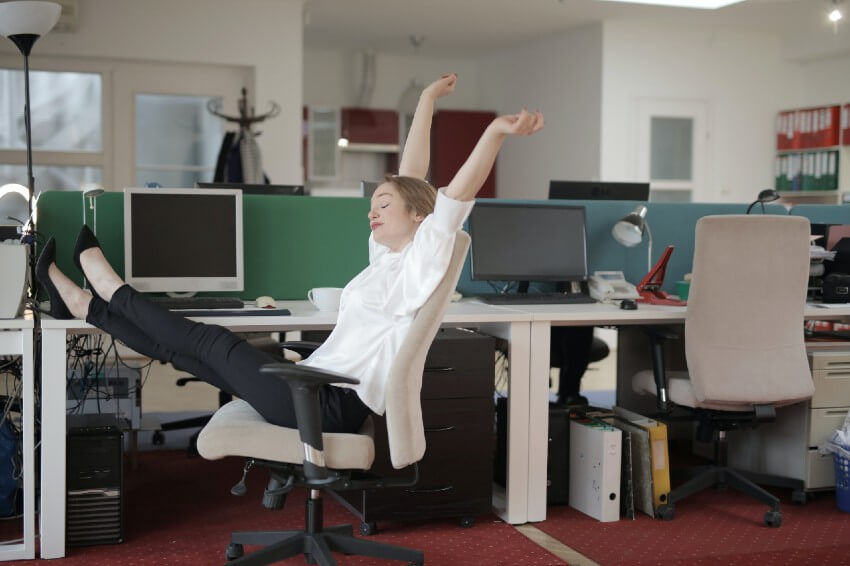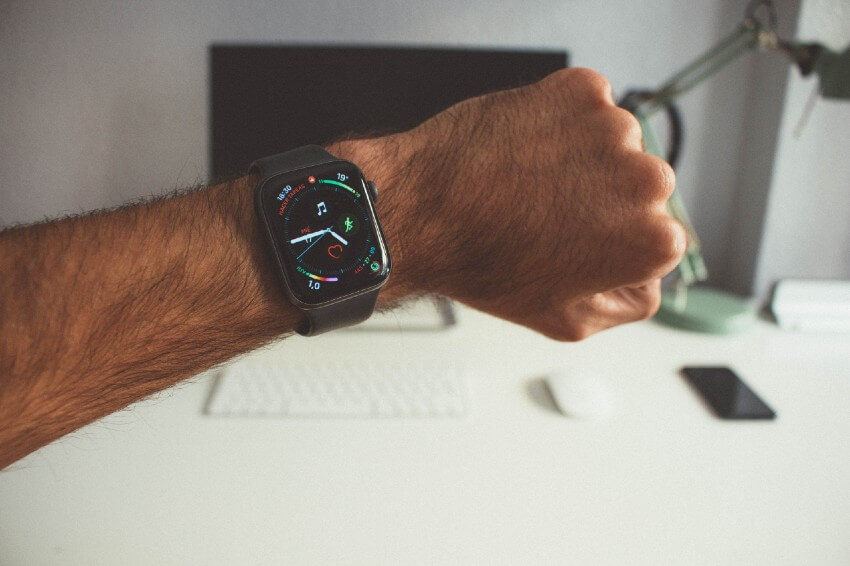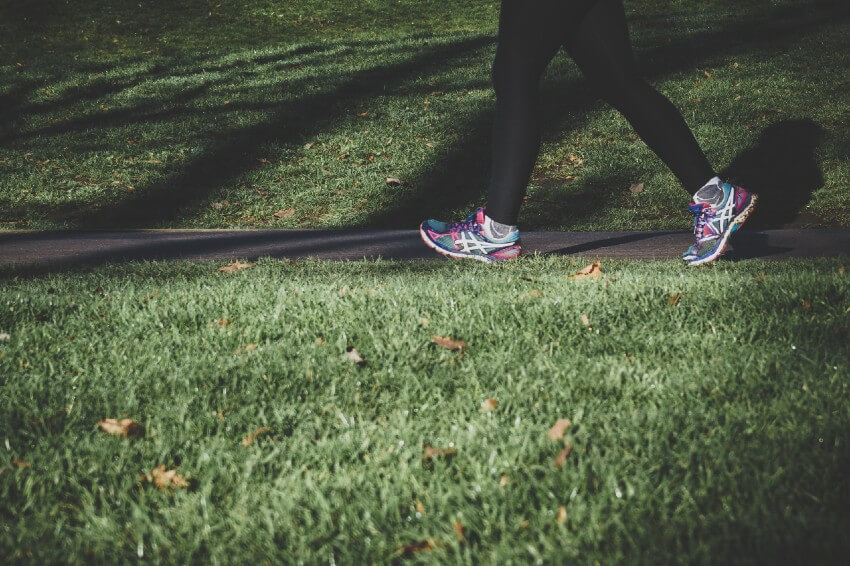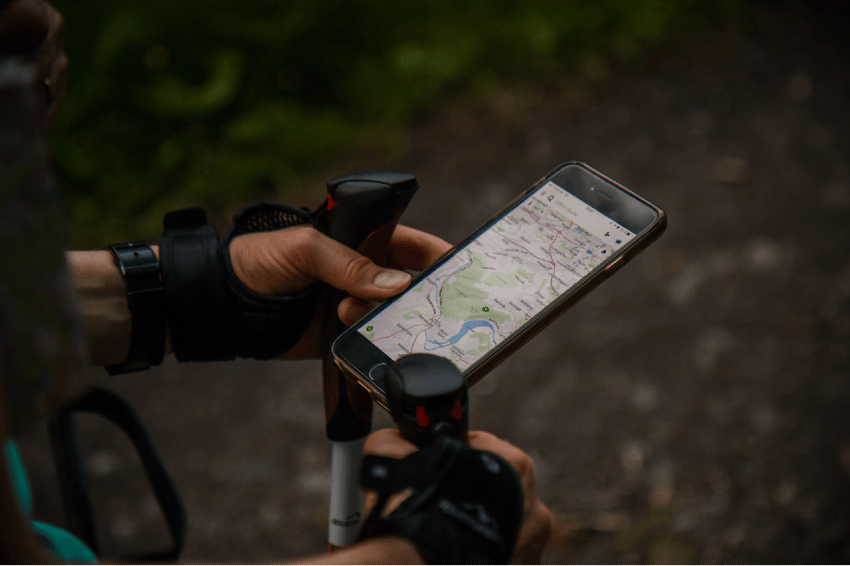
The benefits of walking on health
A good aid to health, walking is far more than just a means of movement or a simple and pleasant activity. A daily walk can contribute to a better, physical and mental.
Walking is an evolutionary skill acquired by mankind

It had took 500,000 years of evolution for man to learn how to stand upright and walk on two feet. At the beginning of this process Homo-sapiens was on all fours. Over the millennia, it learned to stand upright, and balance on its rear two limbs. The human body seemed designed to stand, walk and run. The following characteristics predisposed man to walk.
– alignment of the head and of the spine
– long legs
– knees positioned below the centre of gravity
– reinforced joints to support body weight
– shape of the foot with an arched foot
– gluteal muscles to control balance.
Walking has been the main means of human mobility.
It made for human mass movement over millions of years. Walking remained the main mode of transport throughout the ages, until the Invention of the wheel, and then of motorised vehicles.
“Walking is the best remedy for mankind”

This sentence pronounced more than 2500 years ago by Hippocrates, the father of medicine, sums up the importance of walking for human beings. In general terms, walking is a natural impulse, the importance of which is increasing in our industrialised society where physical activity is decreasing.
Prolonged sitting at our desks in front of screens; excessive use of cars for even the shortest of journeys; new technologies which lead to more sedentary lifestyles, profoundly have changed human habits by reducing physical activity to an unhealthy minimum. This has lead a considerable large part of the world’s population to become morbidly obese.
Though, an actual fact, regular exercise makes it though that the risk of death causes the risk of death drops dropping by 31%.
Direct benefits on our health

Daily walking has an effect on our muscles, skeleton and blood circulation. The benefits of walking on our health are countless:
– maintains weight control
– reduction of cardiovascular diseases
– reducing the risk of diabetes type 2
– improvement of blood pressure
– lowering of cholesterol levels
– improvement of physical condition
– bone consolidation with lowering fractures
– flexibility of muscles and joints with reduction of injuries
– prevention of osteoporosis by increasing bone density
– improved respiratory capacity
– reducing the risk of Alzheimer’s
– relief of depression and tiredness
– reduction of lower back pain
– better oxygenation of the cells
– improvement of venous return to avoid heavy legs
Walking boosts life expectancy

The major advantage of daily walking is the immediate effect on the cardiovascular system. The repeated use of the cardiac muscle improves blood flow and blood pressure, that helps your heart.
The other advantage is the muscular effects. The more you walk, the more you improve the endurance of your locomotor muscles. This better muscle strength will be beneficial when you get older. The strength you gain and the balance you regain will prevent many falls that could be disabling in your old age.
Walking is a fabulous medicine that greatly improves the lives of those who practice it.
Walking, your weight-loss journey

Walking is an ideal activity to induce significant weight loss. By walking for 30 minutes, it will take you 2 to 2.5 kilometres and burn 125 calories. It is a good way to burn fat and control your weight.
The WHO recommends walking at least five days a week to maximize the benefits of physical activity. Walking one hour a day reduces the risk of obesity.
It’s good for morale…

If you prefer walking in a natural and pleasant atmosphere to enjoy the benefits of the surrounding nature, you will feel unwind, you will eliminate toxins and you will produce dopamine, the essential hormone for our happiness.
Walking is an excellent way to reduce depression and anxiety, get rid of negative thoughts, while promoting sleep after long walks. During these hours of walking, you let your thoughts wander, take away the daily worries and gain serenity.
The benefits on your mental health will be undeniable and the activity is highly recommended when dealing with mood disorders or depression.
Walking together to reinforce social relationship

Walking alone or with a group? It depends on your needs. Walking alone will be an excellent meditation, a return to oneself to refocus. Walking together with good company will be perfect to recreate a social bond, to laugh, to exchange and to share a convivial moment.
Indeed, walking does not mean you are lonely. Walking with friends or in group, a sporty and… warm atmosphere. You can make a physical effort, stay motivated, all in a good mood and in a shared pleasure. The group effect is a good way to surpass yourself and go beyond your capabilities.
Another point not to be neglected is that walking in a group allows you to feel safe (especially for women). You feel confident and can enjoy your activity in complete serenity.
Integrate walking into your daily routine

Health organisations advises to do 10,000 steps a day. Look at it this way, it seems impractical. And yet you do 5,000 to 7,000 steps per day, even you are not aware of it.
By picking up children from school, taking public transport, going to the bakery, or to work. You just have to increase a little more the number of steps to reach the recommended threshold. A study by Consumer Reports even highlights the benefits of walking from 15,000 steps per day.
Take the time to incorporate 30 to 40 minutes of active walking a day into your daily routine. A walk is considered active when you take 90 to 110 steps per minute. This represents a speed of about 4 to 5 km/h. This is not jogging, just dynamic walking to get your heart rate up.
Nordic walking

For those who wish to increase their pace and activity, Nordic walking will be a good option. This physical activity, straight from the Scandinavian countries, involves the use of poles, putting even more strain on the muscles and joints. More than 80% of your muscles will be used, including your abs, buttocks, thighs and arms.
Very similar to cross-country skiing, the support on the poles allows you to propel your body forward and to have a faster pace. A good synchronisation and a little training and you will be able to master this walking which is so beneficial for your health.
An easy and free exercise tool

Walking is a simple and economical solution to do good things to our body and mind. There is no need for expensive equipment or subscriptions. An urban walk, a hike in the forest, a walk on footpaths or in a park will do the trick.
Just bring a pair of shoes in which you feel comfortable and walk for 30 minutes a day.
Your Team,
Photo Credits: Unsplash, Pexels
You may be interwsted in these posts

How do you deal with an accident or illness when on holiday abroad?
An accident or illness in the middle of your holiday can quickly become a real headache for both your organisation and your budget. Between the cost of medical care, the language barrier and the lack of reference points, travellers who have not taken out international health insurance before going on holiday abroad are often at […]

10 questions to ask yourself before choosing health insurance for expatriates
Take the time to fully understand the terms and conditions of your health insurance before taking out your policy, to make sure you make the best choice for your needs and budget. 1 – Is it possible to benefit from 24/7 emergency medical assistance? Having 24/7 emergency medical assistance can be a source […]


